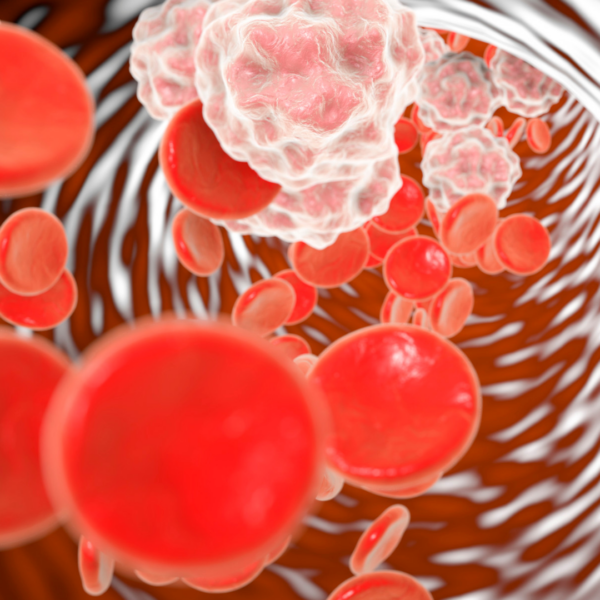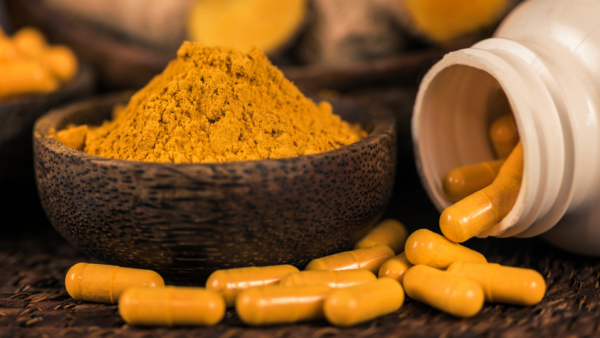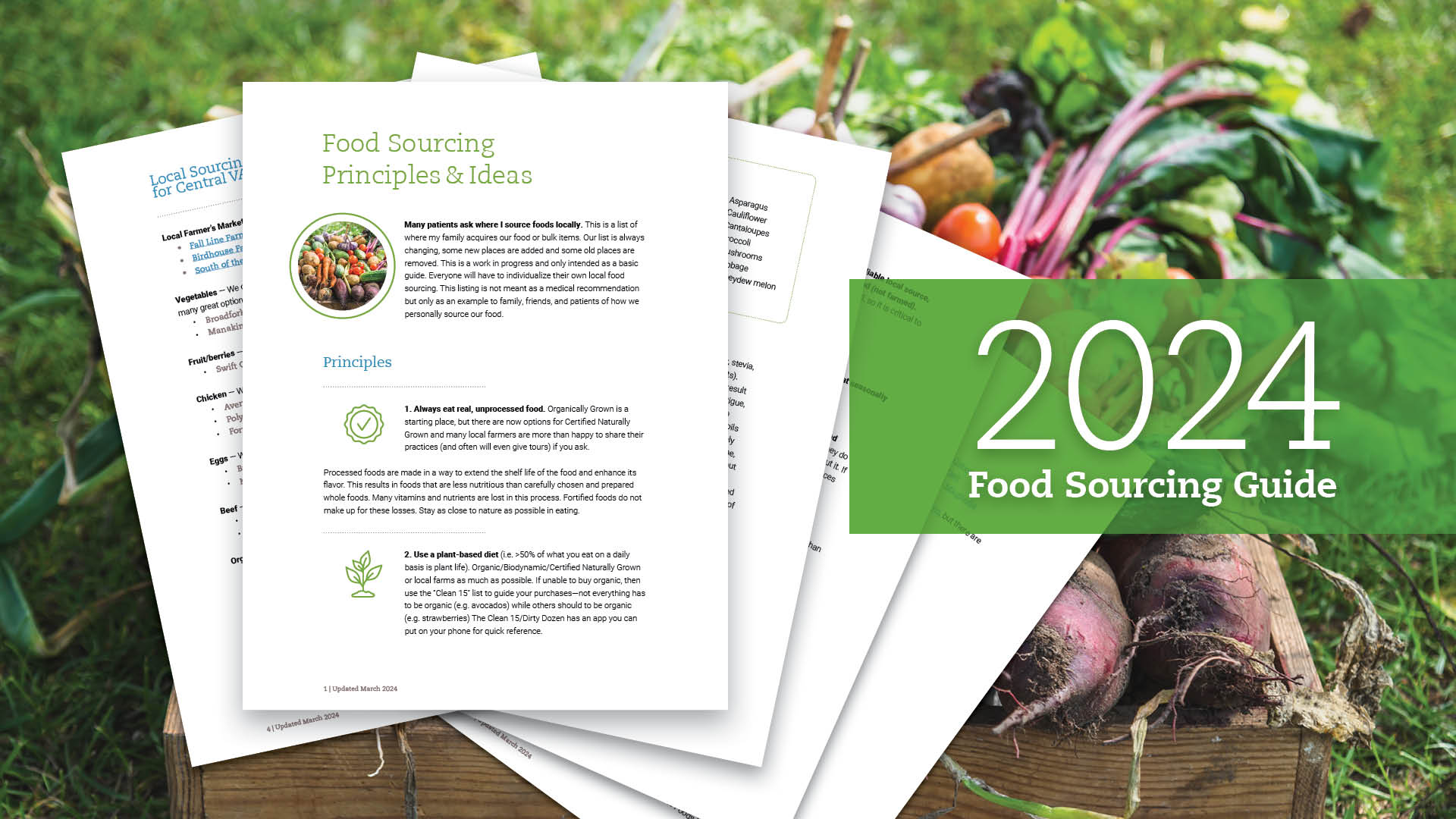Inflammation
The Underlying Cause of Chronic Disease

Aaron Hartman MD
December 12, 2023

Subscribe
Never miss out on new content from Dr. Hartman.
My very first article series on this blog was about inflammation. Already in 2017, I observed:
“It seems that you can’t read any recent article about health issues ranging from dementia to heart disease or cancer and not see a link to inflammation.”
Five years later, and inflammation is hotter than ever (forgive the pun).
Yet, despite the proliferation of articles about inflammation, the topic still confuses many. Typically, you’re left with the feeling that all inflammation is bad. That’s not true. Inflammation is a normal part of cellular metabolism and healing via our amazing immune system. But our immune system can become dysregulated, leading to chronic inflammation.
The key word here is chronic. In other words, persisting too long or continually recurring.
And when inflammation becomes chronic, so does illness.
In this article, I’ll address:
- What Is Inflammation?
- What Causes Inflammation?
- How Do I Treat (Unhealthy, Chronic) Inflammation?
Let’s begin…
What Is Inflammation?

Inflammation is a normal response of our body’s immune system to our own selves and the world around us.
First and foremost, inflammation is a good thing. Inflammation can be the repair response to a sprained ankle or a broken bone. It can be how your body reacts to a foreign invader (e.g.bacteria/virus) or the normal breakdown of cells and clearance of waste materials that your body makes during its daily metabolic activities.
Inflammation is a normal part of our intricate immune system.
Your immune system has two major arms:
- The Innate Immune System
- The Adaptive Immune System
If you’re interested in exploring these two arms of your immune system, I provided a side-by-side comparison in another article. For now, I’ll summarize the relevant cellular activity related to inflammation.
These two systems are regulated by the T-Regulatory (T-reg) cells.
T-Helper Cell 1 (Th-1)
Your Innate Immune System
Your innate immune system is pre-programmed to recognize certain cells as normal and, 99% of the time, do absolutely nothing. When your Th-1 cells encounter 99% of the cells in your body, they recognize them as “self” and do nothing. When you eat mushrooms, your Th-1 cells recognize the fungus as “non-self” and ignore those too.
However, If an abnormal, dangerous pattern is recognized, then these Th-1 cells are activated to remove the abnormal pattern. When you sprain an ankle, your Th-1 cells recognize the damaged cells as “self” (but damaged) and move in to clean up those damaged cells, allowing your tissue to repair itself. When a mutated cell is formed in your body, the Th-1 cells recognize it as “self” (but damaged), and move in to attack it, break it down, and help recycle its parts for use in a new healthy cell. Or, when a new virus or bacteria invades your body, the Th-1 cells recognize it as “non-self” (but dangerous) and engulf it.
The process of an unhealthy, damaged, or dangerous cell being engulfed, broken down, and recycled is inflammation.

T-Helper Cell 2 (Th-2)
Your Adaptive Immune System
When you obtain a new bacterial or viral infection, the activated Th-1 cells also involve Th-2 cells to begin producing antibodies against the invader. Once your adaptive immune system is ramped up, it wages a full-scale, carpet bombing campaign in your body-pouring out millions of antibody particles specially made to fight the invading virus, bacteria, or damaged cells. Once the battle is over, your Th-2 cells make memory antibodies and cells that will circulate in your body and react quickly if the invader shows up again.
These two systems (Th-1 & Th-2) are in constant communication and balance each other without you ever knowing.
Cytokines
Activated immune cells also create mediators of inflammation, called cytokines, that travel through your body and turn up or down your immune system in other parts of your body. If, for example, you get the Flu, your cells make a cytokine called Interferon (IF) that travels throughout your body-activating your immune system elsewhere. Interferon also makes your bones and muscles hurt, makes you feel achy, and causes your brain to shut down so you can rest and divert your energy to fighting off the Flu rather than working/thinking/etc.
This is just the beginning of the beautiful complexity of your immune system. When properly regulated you always have a modest level of inflammation that helps you heal, fight off invaders, clean up toxins, or regulate hormones.
When this system becomes dysregulated, however, you can develop a low-grade chronic illness or a full-blown autoinflammatory or autoimmune disease.
What Causes (Bad) Inflammation?
When in balance, inflammation is a good thing that helps our body to heal and maintain integrity. When out of balance, poor health & healing, disease, or even cancer can result. So, what causes that bad inflammation? What causes our immune system to become “dysregulated?” And, How can I prevent it?

A variety of things can cause inflammation ranging from infections to injuries. I will address five major causes of inflammation and consequently immune system dysregulation. While not exhaustive, this list will provide you with a solid framework of inflammation causes.
The five major causes of inflammation are:
- Trauma
- Infections
- Deficiencies
- Toxins
- Stress
Trauma
Most of us are familiar with physical trauma from life experience. You twist an ankle or fall and hit your thigh and get the classic signs of inflammation: redness, heat, fever, swelling, and loss of function.
After the initial trauma, the contents of the damaged cells are released as well as chemical mediators (cytokines) that recruit your immune system to act. Cell-eating cells (macrophages) come in to recycle the dead and damaged tissue. New progenitor cells (cells that make new cells) follow the cell signals and come to the local area and lay down new structures for the healing tissues to attach to. Finally, balance is again achieved in the local tissues and the system goes back to business as usual.
However, this process can become dysregulated or overwhelmed. An example of dysregulation from trauma would be the local inflammation (specific to your injury and “good” or “appropriate” inflammation) becoming generalized and involving the whole body. Now we have a dysregulated system and “bad” or “inappropriate” inflammation. Severe trauma like a major fall or car accident can also overwhelm organ systems, resulting in organ failure.
But this adverse dysregulation can be caused by things other than trauma, like infections, toxins, and deficiencies.
Infections

Infection in the body is another familiar cause of inflammation. Most of us have had strep throat. You ache all over, get large, red, hot hot-looking tonsils, and are laid up in bed for a few days. These signs of inflammation resemble trauma, but in this case, it’s limited to an infected body part. Once again, your immune system comes to the rescue, walls off the infection (i.e. inflammation), attacks it, kills the infected cells, repairs the damaged tissue, and in a week, you are as good as new.
However, this process can also become derailed. If, for example, you are colonized with strep and genetically vulnerable, your body can make antibodies that attach to your heart (e.g. Rheumatic Heart Disease), your kidneys (e.g. glomerulonephritis), or even in young children your brain (e.g. PANS or PANDAS). Certain viruses that are suppressed can become reactivated and result in limited disease (like shingles from the chicken pox virus) or even certain cancers (like Burkitt’s Lymphoma from the EBV virus). There are too many examples to list here, but you get the idea. Both acute and chronic infections can cause inflammation.
I trust you are starting to see a pattern. Balance in our body systems is crucial for health. Anything that can cause imbalance, can affect our health resulting in chronic inflammation.
Deficiencies

Vitamin and mineral deficiencies are a lesser-known source of inflammation. There is data associating chronic selenium deficiencies to viral infections and even certain types of heart disease. Vitamin D deficiency in the winter months is associated with an uptick in influenza and other winter infections. Vitamin C deficiency is associated with poor dental health as well as poor wound and injury healing. Vitamin B12 deficiency affects nerve function and repair as well as folic acid deficiency affecting the repair of your gut lining.
Although vitamin and mineral deficiencies do not directly cause inflammation, they affect our bodies’ natural healing processes, which results in dysregulation and low-grade chronic inflammation.
Many Americans commonly believe nutritional deficiencies are rare in the U.S. This can’t be further from the truth. According to the textbook Nutritional Medicine by Alan Gaby M.D., 80% of Americans are deficient in magnesium, 40-60% are deficient in any one of the B vitamins and 30% of Americans are deficient in Vitamin D. Added together, the average person has multiple nutrient deficiencies. These affect immune system response rates, degree of response, order of response (over or under response) and whether the response turns off or remains chronically on.
Toxins
Toxins are another overlooked cause of inflammation.
Technically, a toxin is a substance produced by another living organism or a natural substance that can cause damage to the human body (e.g. poisonous mushrooms). A toxicant is a man-made substance that can cause damage and/or disease to your body (e.g. pesticides). For simplicity, most people use the term toxin for both, which I will do here as well.

A high-dose exposure to a toxin will often cause acute inflammation. But repeated, low-level exposure to toxins can often lead to low-grade, chronic inflammation. This is critical to recognize. The basic concept is that a low-grade exposure to a chemical or heavy metal will bind to proteins in your body and create a structure your body doesn’t recognize. This activates your immune system to come and clear out the substance. Because the exposure is ongoing, however, the low-level inflammation does not resolve. Eventually, your immune system can become so disorganized that it creates antibodies to the altered proteins that react against healthy cells. This is called Molecular Mimicry and is emerging as a cause of autoimmune disease.
The difficulty with toxin exposure is that it’s rarely a simple, one-to-one correlation. More likely, toxin exposure is a complex interaction of differing toxins. The average female puts over 150 chemicals on her body each morning before going to work. There are over 80,000 chemicals that have been produced or are in production in the US and many of these find their way into the environment. To date, all safety studies are on single chemicals and fail to account for the myriad interactions within the human body.
Stress
Stress is one of the most pervasive, yet least understood, causes of inflammation in our country today. The field of stress-induced inflammation is called Psychoneuroendoimmunology, or PNEI for short.
The basic concept is that stress in your mind releases signaling molecules that travel via your nervous system to all the organs attached to your nervous system. The effect is especially potent on your hormone system and immune system. Over time, the chronic stress that initially caused a heightened sense of hormone and immune response results in the downregulation of these systems and eventually-if left unchecked-their dysregulation.

What does this look like in real life? Imagine someone or something scares you. Your innate nervous system response is to activate your adrenal glands to release adrenalin to speed up your heart, muscles, and brain for action. At the same time, your pancreas is stimulated to release a hormone called glucagon to elevate your sugar levels to also prepare you for rapid action. The Vagus nerve to your gut slows down digestion and diverts blood flow from your digestive organs to your muscles. All this happens instantly-pretty awesome! If, however, the stressor does not resolve over time, your sleep can become disrupted, you can develop insulin resistance (a precursor to diabetes), you can start to get digestive tract issues and food intolerances and markers of inflammation and immune system dysregulation will elevate in your blood.
The problem with the above is that your body can’t discern the difference between a life-threatening stressor and a benign one. So your body’s response to the daily stressors of being late to work, stuck in traffic, or worrying over events in your news feed is the same as if you were going through a life-threatening stressor like a famine or major migration caused by war. These chronic stressors can eventually affect your hormone levels, immune system dysfunction, and memory. But at the cellular level, the final common denominator for all of these is inflammation.
I hope that understanding the causes of inflammation doesn’t produce further stress. I don’t want you to feel there is nothing you can do to prevent or manage adverse inflammation. In the next section, I’ll turn to treatment options.
Solutions & Support
How Do I Treat (Bad) Inflammation?
When our immune system becomes dysregulated, inflammation escalates and fails to resolve. In other words, it becomes chronic, leading to chronic illness.
When that happens, how can we treat that unhealthy inflammation?
Better still, how can we prevent that chronic inflammation from taking root? From a Functional Medicine perspective, the best treatment options are largely the same practices that will protect or prevent chronic inflammation, so I will address prevention and treatment together.
I’ll address five categories of solutions:
- Food & Water
- Spices
- Lifestyle
- Triggers
- Supplements

Anti-Inflammatory Food & Water
Your diet (food & drink) is the largest single exposure to either inflammatory or anti-inflammatory substances.
The average American eats almost 2,000 pounds of food a year, not including fluids. In a lifetime, that can be over 60 tons of food consumption alone! The average American drinks about 58 gallons of water a year. If they were to drink the recommended 8 glasses a day that would add up to 185 gallons a year.
As you can see, a small toxin exposure or chemical exposure in your food or drink can over time add up to an enormous amount of exposure either for the benefit or detriment of your health.
The once-a-week fast food exposure or the daily exposure to chemicals in your drinking water can easily add up.
A recent study from the Harvard School for Public Health found that the drinking water of over 6 million Americans contained the industrial chemicals polyfluoroalkyl and perfluoroalkyl substances (PFASs), and these were above the accepted safety limit of 70 ng/l. This is in addition to typical amounts of chlorine, fluoride, and trace chemicals found in drinking water.
What can be done?
Shop Smarter
The Environmental Working Group has been testing food pesticide and chemical levels

for years and has shown significant levels of pesticides, fungicides, and related chemicals on many fresh foods. You can review their info at www.ewg.com This site has a nice little app you can download on your phone and use while grocery shopping to see which foods need to be organic and which do not.
Drink Better Water
Consider drinking filtered, non-bottled water. Nearly a quarter of bottled water comes from local municipalities and is no better than your own tap water. I recommend purchasing quality water filters. I personally use a British Berkefeld Gravity carbon-impregnated ceramic system. They are a little expensive but each cartridge is good for 2,000 gallons of water, so it pays for itself in just a year (versus bottled water). Also, purchase a quality stainless steel or glass water bottle to fill up your filtered water. In the long run, this will save you money.
Eat Better Food

Next, begin eating clean, anti-inflammatory foods. A full meal plan detailing an anti-inflammatory diet is available on our website. This plan explains how food can be medicinal and help your body with inflammation as well as naturally clean out toxins that have accumulated over time.
Anti-inflammatory foods include:
- Foods rich in omega-3 fatty acids (e.g. salmon, almonds, walnuts, pecans)
- Monounsaturated oils with polyphenols (e.g. olive oil)
- Dark leafy greens (e.g. spinach, kale, chard, collards, broccoli)
- Phytonutrient-rich foods (e.g. beets, berries, carrots, squash)
- Immune-modulating foods (e.g. mushrooms)
- Green & herbal teas
- Alliums (e.g. garlic, onions, asparagus)
The food suite above has a seven-day meal planning menu plus a nice one-page sheet with a listing of all approved foods, to help you while grocery shopping.
Anti-Inflammatory Spices
Spices are often forgotten but are extremely important in their immune-modulating and anti-inflammatory effects.

One of my mentors mentioned to me a study of indigenous Indians off the coast of Honduras who drank daily a cocoa-based drink rich in polyphenols (plant-based antioxidants). This group experienced no high blood pressure or heart disease. Most of the adult males who moved to the capital and stopped drinking the beverage developed hypertension within one year. Similarly, in India, where the average adult uses 5 teaspoons of turmeric a day, the elderly have a 4-6-fold decreased incidence of Alzheimer’s Disease. Curcumin (found in turmeric) alone has 83 different chemical pathways that it modulates to help regulate inflammation.
Using more spices in your cooking allows you to ‘upgrade’ the anti-inflammatory effects of your food without changing the foods you eat or adding a single calorie.
The most important of these spices include:
- Turmeric
- Celery seeds
- Ginger
- Cinnamon
- Garlic
- Cloves
- Cayenne
- Capsaicin
- Black pepper
- Rosemary
- Oregano
- Sage
- Thyme
- Holy basil
Anti-Inflammatory Lifestyle
This may be the most difficult change to start because it is counter-cultural to our contemporary American lifestyle.

Exercising 30 minutes a day increases Serotonin levels (a brain neurotransmitter) more than the best anti-depressants on the market. It also will lower your risk for cardiovascular disease by over 30% and significantly decrease your risk for neurodegenerative diseases (Alzheimer’s and Parkinson’s Disease). Meditation has been shown to lengthen telomeres (the protective caps on DNA that correlate to genetic age) as well and Tai Chi yet these practices are unknown or unpracticed by most Americans.
Toxic or inflammatory relationships have been shown to disrupt sleep, elevate cortisol levels and suppress your Th1 immune cells (this concept was discussed in Part I) yet we rarely evaluate and remove ourselves from stressful jobs, stressful environments or relationships. ‘Busy’ is a badge of honor we wear and refuse to give up-even to our own detriment. We get more ‘involved’ and keep ourselves super-busy all the time. A full discussion of this is not possible here, but suffice it to say this is a huge area of inflammation in most Americans lives.
Here are some ideas to address your inflammatory lifestyle:
- Exercise
- Deep breathing
- Yoga
- Meditation (focused awareness)
- Prayer
- Mindfulness Practices
- Biofeedback – Neurobiofeedback, HeartMath, MUSE
- Sunshine exposure for 20 minutes daily
- Sleep (ideally 8 hours at night, but if not then at least 7)
- Related Articles: Alternative Medicine Suggestions For Better Sleep, Getting “Unstuck”: 3 Obstacles (and 3 Solutions) to Unleash Your Body’s Ability to Heal
Removal of Triggers
There are many things that can trigger inflammation. I have already mentioned mechanical stress and trauma, the Standard American Diet (SAD), and environmental toxins in food and water.
Other things that can trigger or mediate inflammation include:
- Prescription drugs
- Over the Counter medications
- NSAIDs (Nonsteroidal Anti-Inflammatory Drugs)
- Fungal/bacterial/viral infections
- Lack of sleep and exercise
- Mindfulness Practices
- Obesity
- Preexisting medical conditions (diabetes, hypertension or coronary artery disease)
Some of these can be easily addressed, while others can be difficult or near impossible. It’s best to start with the low-hanging fruit: a clean diet, clean air and water, daily exercise, adequate sleep, and stress management.
For many of my patients, this has been all they have needed to do. I usually focus on diet first, as it is the most critical and the one most people identify with. Some of the others will require working with a Functional Medicine Practitioner.
Anti Inflammatory Supplements

I include this section last for a reason. Most people jump to supplements because they are thought of as a quick fix. Supplements, however, are meant to-well-supplement. Supplement all the above: diet, lifestyle, food, everything. So, when you reach for your supplement, ask yourself if you have addressed the above or have a plan to do so.
Anti-inflammatory supplements include:
- Curcumin
- Resveratrol
- Bowsellia Serrata
- Alpha Lipoic Acid
- Pycnogenol
- White Willow Bark
- EPA/DHA fatty acids from fish oil
- N-acetyl Cysteine
- Probiotics
- Vitamin C
- Vitamin E (ideally with mixed tocopherols and tocotrienols
A few notes on specific anti-inflammatory supplements…
Curcumin
Curcumin is the most highly researched and best known anti-inflammatory supplement. It helps decrease inflammation and modulate the immune system through 83 different biochemical pathways. Typical dosing is 100 – 500mg, but safety data shows it is safe up to 10,000mg daily. The literature shows it being used for heart-related issues and neurologic issues at doses of 1,000 – 5,000mg. I use Meriva 500SF by Thorne in my clinic. It is a liposomal form using sunflower lecithin that improves its absorption. In some cases, the blood levels are 20+ times that of the non-liposomal oral forms.
Resveratrol
Resveratrol is typically used for its anti-inflammatory effects in cardiovascular and brain health. Grapes and wine are a well-known source of resveratrol, though the amount in these is small (5-10mg). Dosing for this supplement ranges from 100 – 400mg. I usually recommend Resveratrol Supreme by Designs for Health. It has a decent dose of 200mg of the active trans-Resveratrol in a single capsule.
Bowsellia Serrata
Also, known as Indian Frankincense, has been prized for its medicinal uses for millennia and was one of the herbs of great value the Wise Men brought from the East. It is used both topically and ingested. Boswellic acids are the active constituent and act via their effect on migrating neutrophil blood cells as well as the complement system. Dosing ranges from 100 – 500mg. Boswelllia Phytosome by Thorne delivers a phospholipid form at 350mg that is highly bioactive.
What’s Next?
The information above is a lot to digest. Trying to tackle it all at once can be overwhelming.
I usually recommend starting with a few key areas and working out from there on how best to reduce inflammation for you with natural methods.
Other resources include books listed on our website that have been written by Integrative and Functional Medicine Practitioners. Topics in these books ranges from thyroid disease, to brain health, neurodegeneration, gut health, IBS, adrenal fatigue and Chronic Lyme Disease.
I recommend starting with one item from each of the categories above and then expanding from there.
